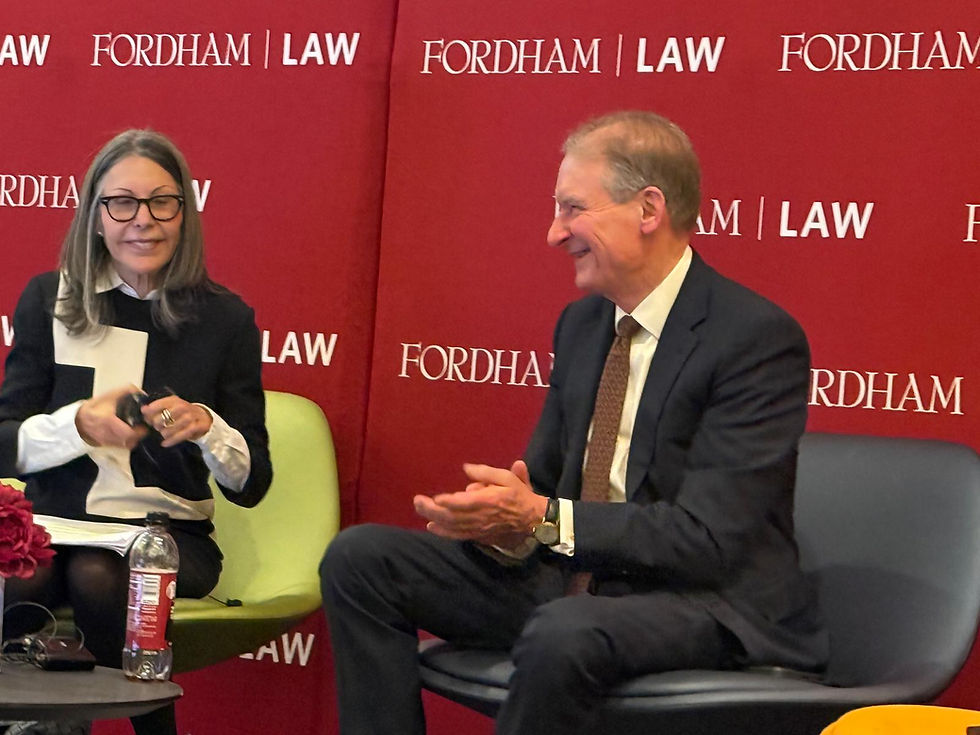UK Court rejects copyright in Bitcoin File Format
- J Huang and S Pettigrove
- Mar 10, 2023
- 3 min read

An English Court has rejected Craig Wright's claim to copyright in the Bitcoin File Format in an initial blow to his attempt to prove breach of copyright and block the further operation of the main Bitcoin blockchain (BTC blockchain) and the Bitcoin Cash blockchain (BCH blockchain) without his consent.
Dr Wright is an Australian computer scientist who claims to have invented bitcoin and authored the Bitcoin Whitepaper under the pseudonym Satoshi Nakamoto. In this action, Dr Wright claims breach of copyright in database rights relating to the Bitcoin blockchain, the Bitcoin Whitepaper and the Bitcoin File Format in an effort to thwart two popular forks of the Bitcoin blockchain (the BTC and BCH blockchains, which underpin Bitcoin and Bitcoin Cash).
The High Court's judgment focused on a procedural matters: whether Dr Wright may serve his claim on defendants outside the UK. For that, Dr Wright must show that there is a serious issue to be tried. In other words, his claim must have a real prospect of success.
While Justice Mellor decided that Dr Wright had some prospect of successfully claiming database rights and copyright in the Bitcoin Whitepaper, he was not convinced that Dr Wright has any copyright in the Bitcoin File Format.
Justice Mellor's reasoning focused on the "fixation" requirement of copyright, a general principle which is codified in section 3(2) of UK's Copyright Designs and Patents Act 1988:
Copyright does not subsist in a literary, ... work unless and until it is recorded, in writing or otherwise
Therefore he queried:
When and in what form the alleged literary work in the Bitcoin File Format was first recorded
While Justice Mellor accepted there was no doubt as to what the Bitcoin File Format is - because it had been clearly described in the particulars of claim - he said Dr Wright failed to identify what exactly made up the relevant "work" which defined the Bitcoin File Format:
despite all these opportunities, the Claimants have not filed any evidence to the effect that a block contains content indicating the structure, as opposed to simply reflecting it.
In other words, it was not sufficient that a block reflects the structure of the Bitcoin File Format, it needs to contain content that indicates the structure in order to demonstrate original thought. Mellor J said the absence of evidence on "content" confirmed his view that, nowhere was the structure of Bitcoin File Format fixed in a copyright sense in a material form.
Justice Mellor went on to give an example of what might meet the requirement in his view:
By 'content indicating the structure', I mean, by way of a crude example, a flag or symbol in the block which signals 'this is the start of the header' or 'this is the end of the header', or an equivalent of the sort of content which is found in an XML file format.
As to "when" did the fixation/recording take place which gave rise to a copyright, the Claimant argued that,
"the requirement for fixation/sufficient identifiability was met automatically when the program was run...when the software runs and the hashing problem is solved, a block is created in the Bitcoin File Format.. this is sufficient to meet the fixation/sufficient identifiability requirements.'"
Justice Mellor said the above view is "plainly incorrect", based on the facts already stated above. Again, it is not sufficient to show that when the software of the Bitcoin system runs, a particular block on the blockchain is created in the Bitcoin File Format. Evidence is required that a block contains content that indicates the structure and original thought.
Dr Wright is no stranger to disputes. Over the past few years, he has made a number of allegations and initiated various court actions (including this one) asserting that he has various rights in the bitcoin blockchain. Some of these cases, such as the Tulip case, are still ongoing and may end up setting interesting precedents in relation to different areas of law including intellectual property, copyright and the duties of software developers.



